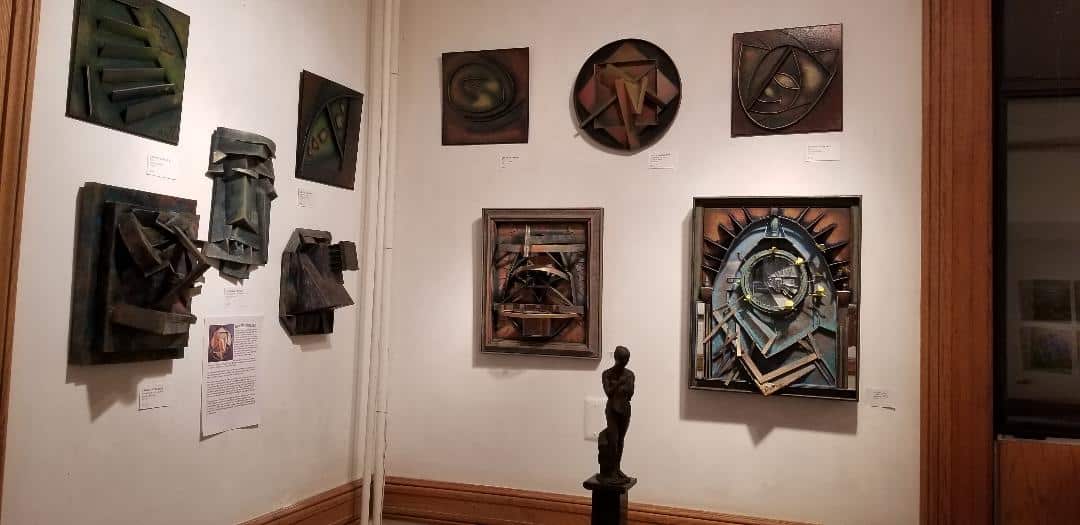The Mora Museum, formerly known as the Museum of Russian Art, is a cultural fixture of Jersey City, NJ. It has a deep historical connection to the Nonconformist Movement in Russian art, and more recently has embraced contemporary movements such as those exemplified by artists like Elena Sarni, Leonid Lerman, Vasily Kafanov and Naum Medovoy.
The museum’s first director, Alexander Glezer, while still living and working in the Soviet Union, had helped to organize the infamous nonconformist showing in 1974, later dubbed the “Bulldozer Exhibition.” To showcase the artwork, an unofficial “gallery” had been erected in a field, only to be violently plowed down by the police, who employed bulldozers and water trucks. Many works of art were confiscated by police while others were destroyed on the spot.
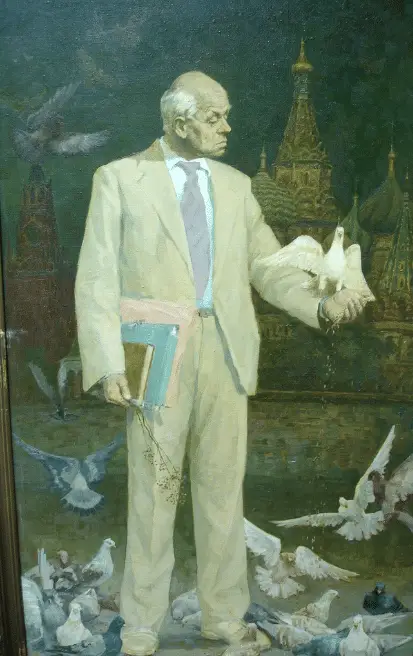
The incident took place during what has been called the “Era of Stagnation,” a term that could be applied to both the USSR’s economy and its cultural policy. Many artistic movements began to blossom during this era, but government controls forced many nonconformists to move underground or go overseas. A gradual loosening of government controls on art had begun in 1953 with Stalin’s death, but policy still ebbed and flowed as forward-looking artists pushed against the entrenched establishment. By the 70s and 80s the Nonconformist Movement had gained tremendous, if “unofficial” cultural importance, pushing further and further away from government-mandated Socialist Realism. Still, Russian artists who lacked official sanction still often faced repression, had great difficulty finding showings for their work. Many were forced to emigrate. Many of those emigrants found a home in Jersey City’s art scene during the 80s and 90s, when the Museum of Russian Art enjoyed its hey-day as a hub of intellectual and artistic collaboration among Russian immigrants.
The Eubanks say one of the highlights of their collection was a series of anti-Soviet paintings by Ukraine’s Boris Spornikov (1930-2005). The paintings were never exhibited until the collapse of the Soviet Union. “Each painting was a masterwork depicting such themes as famous Soviet citizens persecuted or killed by the Soviets, such as (Andrei) Sakharov and (Aleksandr) Solzhenitsyn,” says Scott Eubanks. “They were dark and moody and living history – not for everyone’s wall above the fireplace.”
In Spornikov’s painting of Soviet-nuclear-physicist-turned-dissident-political-activist Sakharov, the scientist stands with notebooks under one arm and with bird feed in another, attracting a flock while standing against a darkened Kremlin. The Kiev-born artist painted in a socialist realism style and, in addition to having prominent Soviet citizens as his subjects, he also painted portraits of oil workers and scenes from collective farms.
You Might Also Like
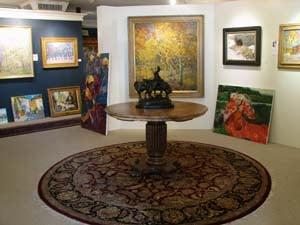
Gallery Russia in Scottsdale, AZ
The catalyst for what is now Gallery Russia in Scottsdale, Ariz., came at a pivotal time in 1992. Father and son co-owners Scott and Paul Eubanks say that after the collapse of the Soviet Union, Westerners were more curious than ever to learn about their Cold War rival — creating an opportunity to explore that […]
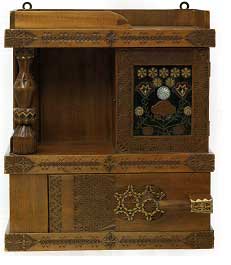
Russian Crafts Tour the US
This article was originally published on SRAS.org in February, 2006 and was donated to this site at its launch in 2011. The article focuses on the only piece of Russian art to be featured at The Victoria and Albert Museum exhibition called “International Arts and Crafts” in 2006. That exhibit later toured America. In his […]
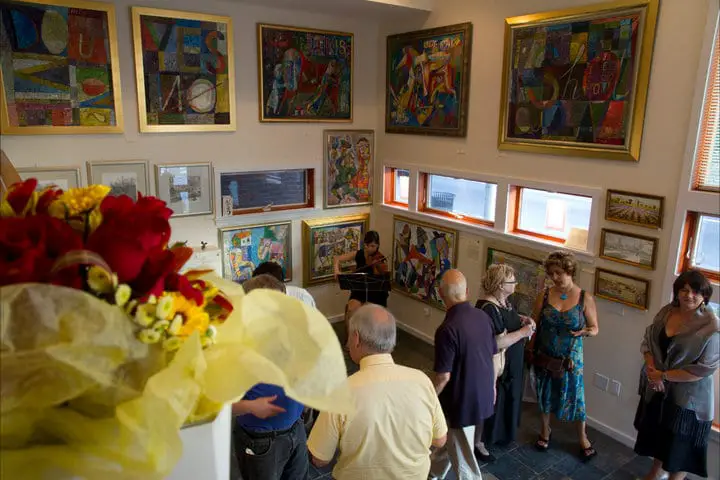
From Russia With Art in Cambridge, MA
The From Russia With Art Gallery in Cambridge, Massachusetts opened in August of 2010. Though it has recently closed its physical doors, it maintains an internet presence and plans to feature moving exhibitions. The museum in this way continues on much as before, selling and building knowledge of contemporary Russian-American art. The museum proprietors, Jerry […]
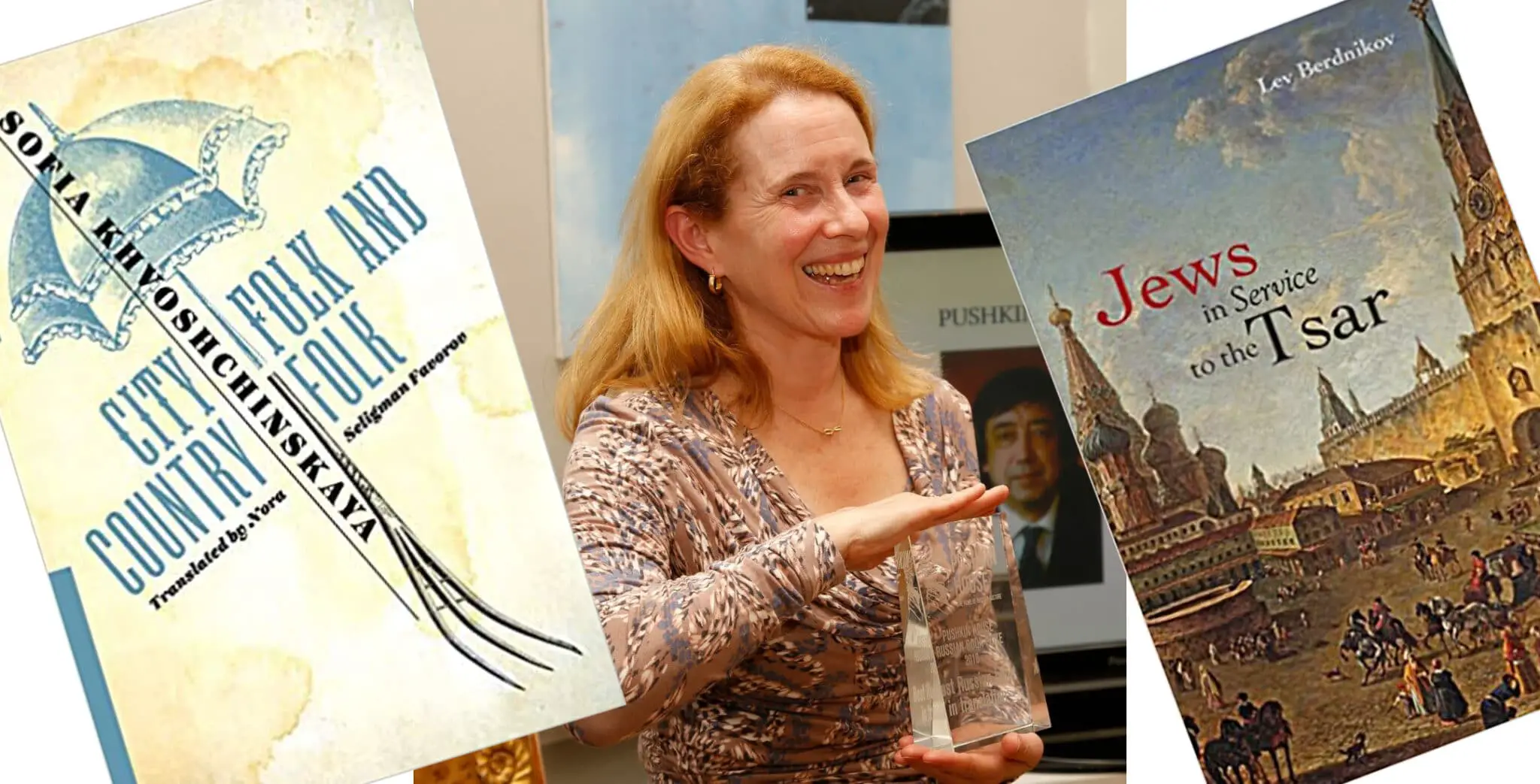
The Accidental Translator: Interview with Nora Favorov
Nora Favorov is a freelance, professional translator working in the Russian>English market and is an active member of the American Translator Association. She recently took some time from her piles of manuscripts to talk about how she came to work in her profession and what it’s like to work in a profession that often must bridge art […]

Museum of Russian Poetry in Rockville, Md.
The Museum of Russian Poetry, located in Rockville, MD., just outside of Washington, DC, holds an impressive collection of Russian and Soviet literary artifacts. This small, private museum The small, niche space is packed from wall to wall with artifacts celebrating Silver Age masters like Boris Pasternak, Marina Tsvetaeva, Osip Mandelshtam, Anna Akhmatova and Nikolai […]


